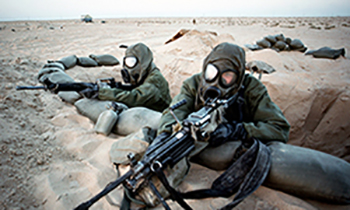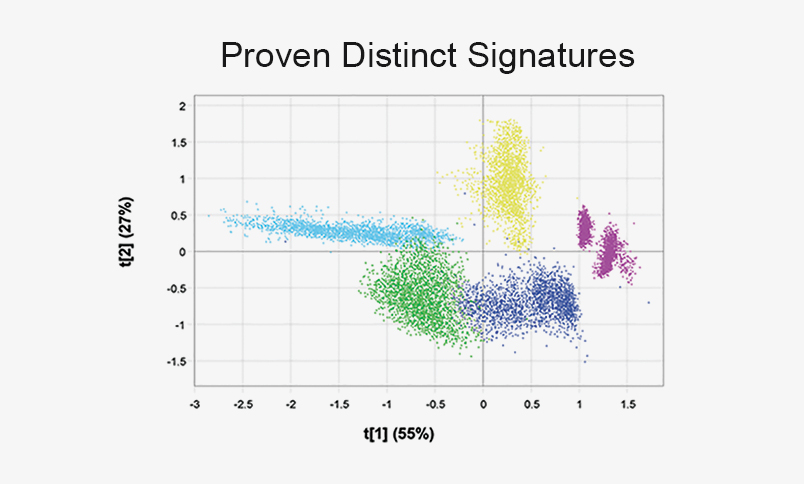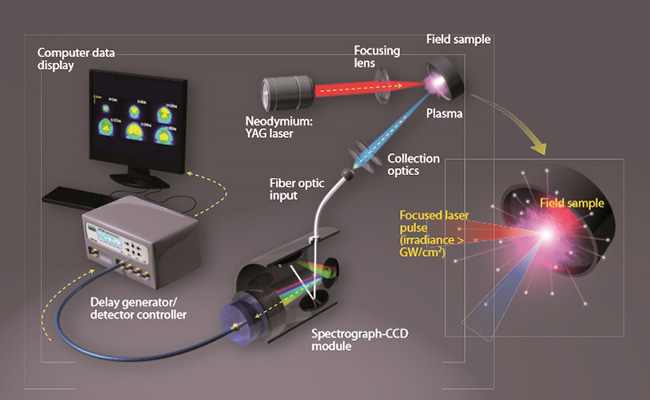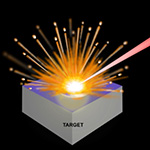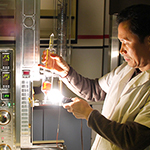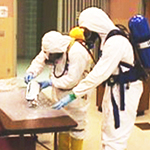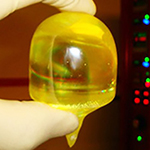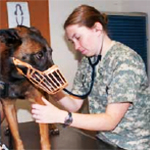Chemical, Biological and High-Yield Explosive (CBE) Detection
Chemical detection
Chemical detection has played a central role throughout the history of Brimrose Technology, whether it be in structural and composition detection, locating enemy soldiers by their uniform type, identifying different types of liquids, making photorefractive materials, identifying and sorting plastics, or performing standoff chemical detection using photoacoustic sensing techniques. Biological detection is being developed to identify potentially harmful powders in real time, as well as rapidly identifying disease. Laser Induced Breakdown Spectroscopy, or LIBS, has the capability to identify chemical structures such as explosives in potentially dangerous environments.
A recent addition to the extensive family of tools that Brimrose uses to chemically detect materials is the BrimEX 101. This is a new hyperspectral imaging unit with unique capabilities that benefits from American ingenuity (fast scanning speeds, lower cost, high capability, improved electronics) and Israeli innovation (next-gen software, automatic background detection). It is developed under the BIRD Foundation in collaboration with U.S. and Israeli governments.
For more information contact:
David Chaffee
Brimrose Technology Corporation
443-338-4356 (Direct)
410-472-7070 (Office)
Biological Detection
The BTC Team has historical roots in the initial development of the rapid field-based specific biodetection assays for Desert Storm 1. These colloidal gold assays, the forerunner of the lateral flow assays, were the first “fielded” Bio-Defense assays, effectively used during this conflict in 1991. The first assays targeted the threats of anthrax, bot toxin and others and were subsequently expanded to include new threats as well. The threat agent eagent collection and experience was expanded further with projects, through US Government programs, with the Former Soviet Union (FSU). These programs allowed the BTC Team to engage in projects with the former offensive institutes in the FSU under Biopreparat, the Soviet Union's major biological warfare agency. Numerous developmental projects followed. The most recent example is the award, in September 2018, of a contract to develop for the DoD, a Point of Care (POC) Diagnostic Assay targeting Yersinia pestis. Other assays are planned by the BTC Team.
In addition to rapid immunological assays, the BTC team has developed technologies which rapidly detect the presence of a few spores or bacteria in environmental samples in minutes. This in-the-field, Bioluminescence based test correlates to culture and has received USDA filed validation and has been issued a US FDA 510k for human use. Several thousand of these systems have been used globally for over a decade.
The BTC team continues to develop new next generation rapid assays for use in the field or bed side. Some assays do not require instrumentation; however, if necessary, small, rugged battery powered devices have been developed.
For more information contact:
Dr. Yingyun Liu
Brimrose Technology Corporation
410-472-2600
AOTF HYPERSPECTRAL IMAGING FOR DETECTION OF BACTERIA
simultaneous uvn + lwir Laser-Induced Breakdown Spectroscopy
Regarding CBE detection, BTC has been at the forefront of newly developed Infrared Laser-Induced Breakdown Spectroscopy technology, or IR LIBS. IR LIBS, also known as LITE, or Laser-Induced Thermal Emission, has greater capabilities to identity target compounds than traditional LIBS systems. IR LIBS/LITE is a standoff detection technology that can identify target compounds in a hazardous environment by using pulsed lasers and spectrometers. BTC has worked with the Edgewood Chemical and Biological Center as part of multiple contracts to better understand and execute this exciting technology
For more information contact:
Dr. Feng Jin
Brimrose Technology Corporation
410-472-2600
Dr. Clayton Yang
Brimrose Technology Corporation
410-472-2600
Basic Design of A Laser-Induced Breakdown Spectroscopy System
Benefits of LIBS technology
Real-time, insitu Standoff Technology
Standoff technology can identify target compounds at up to 100 meters.
New technology being developed with Dr. Alan Samuels at ECBC can potentially identify molecular fragments as well as atomic fragments and make the identification unambiguous.
BTC Labs currently is testing IR-LIBS and developing the library of various explosives.
Physicist/Spectroscopist Dr. Clayton Yang has recently joined the BTC staff to accompany the Product Development Manager Dr. Feng Jin to develop the stand-off detection system.
overall Applications of BTC Detection Technologies
Explosives
TICs / TIMs Fentanyl and Other Drugs
Chemical and Biological Hoax Materials
Oil Spills
Skin Cancer
Burn Infection
Urban Threats






